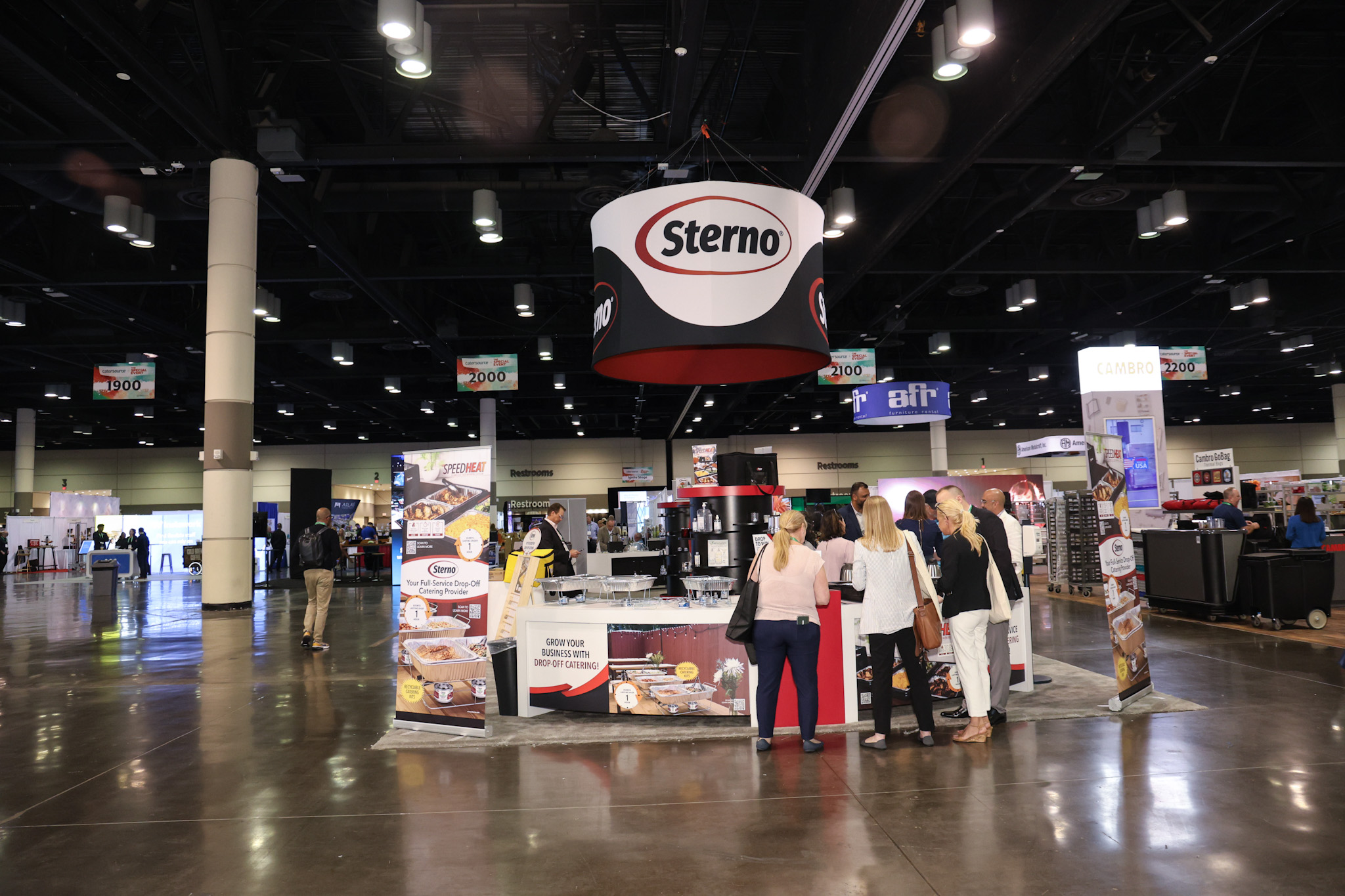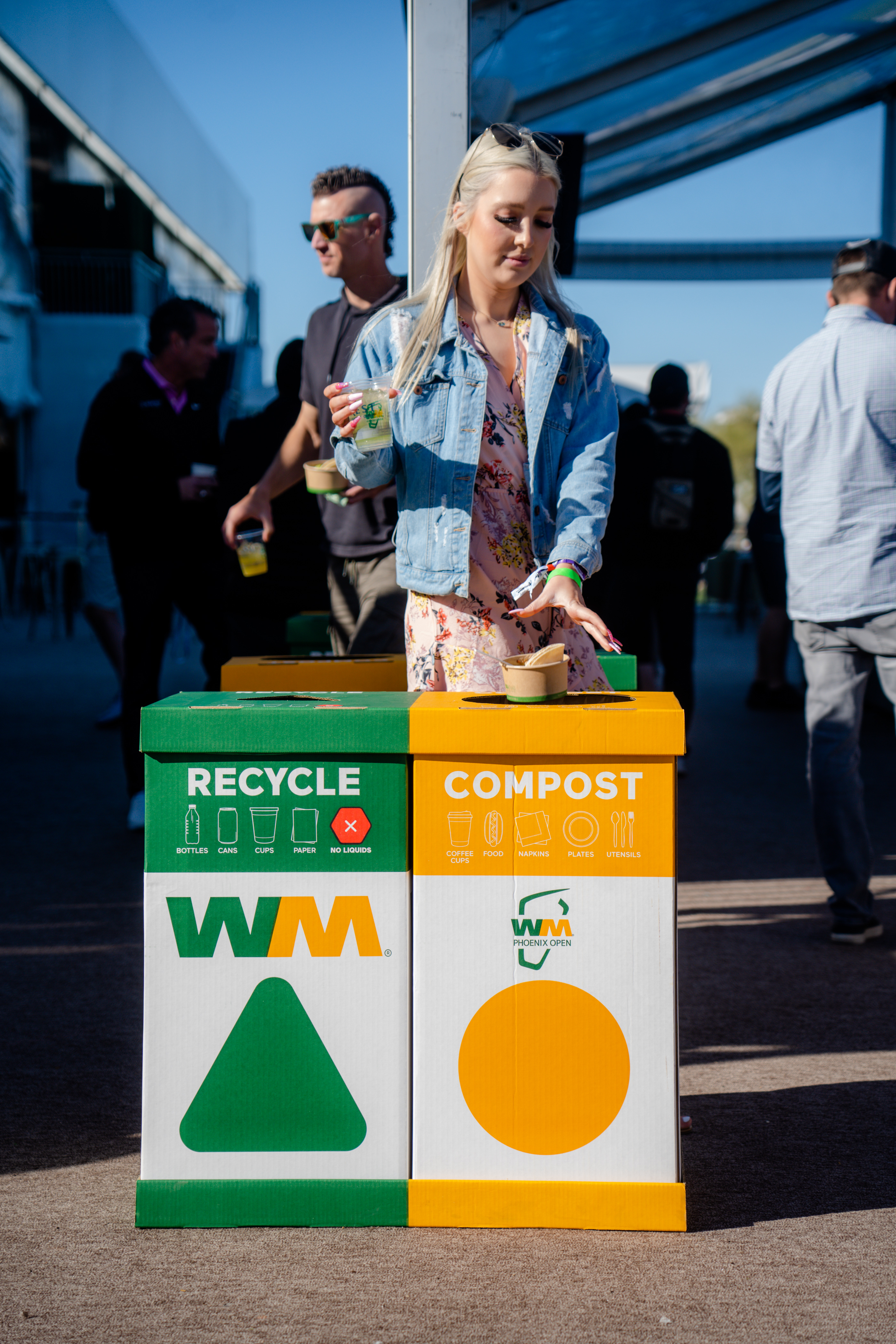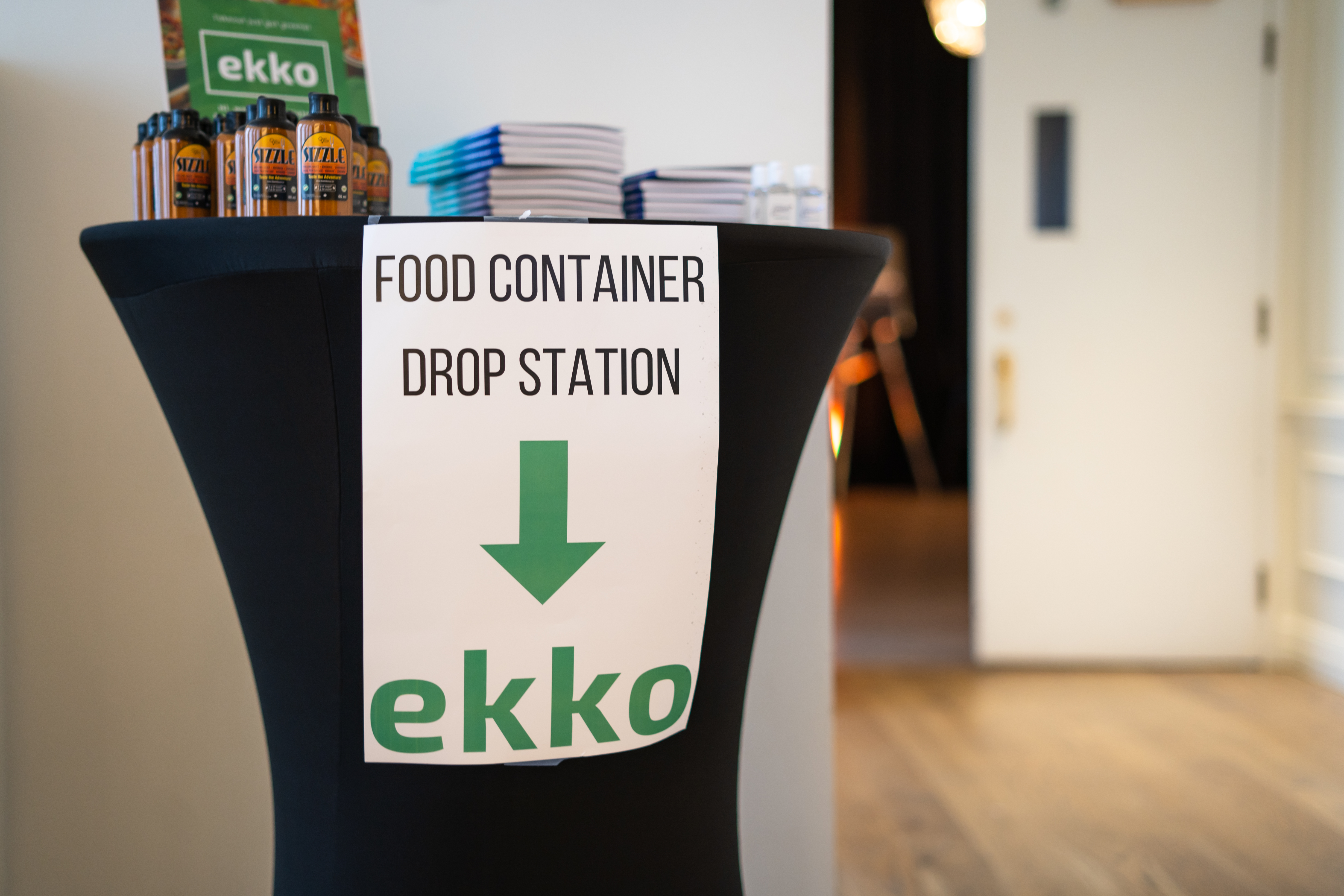Sustainability is a topic that continues to grow in popularity, yet as conversations evolve, planners are looking for more concrete ways to reduce the impact of events on the environment. One major element of creating sustainable events is to offset carbon emissions, commonly referred to as “net zero.”
In their session Saved by Zero at this year’s Catersource + The Special Event (held in Orlando this past March), sustainability consultants Suzanne Morrell and Natalie Lowe defined net zero as the “balance between [the] amount of greenhouse gas (GHG) that’s produced and the amount that’s removed from the atmosphere.” This boils down to a simple equation: emissions – mitigation = net emissions (which is the same thing as the offset emissions). In other words, events contribute to the production of carbon, a greenhouse gas that is a main contributor to climate change and the rapid warming of the planet. Events create excess carbon through transportation, energy, food waste, and general waste. Travel to and from events, energy used to sustain events, food thrown out at the end of events, and consumer waste—things like carpet, swag, and unrecycled plastic—all contribute to excess carbon emissions, which is why responsible event production takes these factors into account and works to counteract them.
In November 2021, world leaders got together at COP26, the World Climate Summit, and formed Net Zero Carbon Events, an initiative to address climate change through the offsetting of event-created carbon emissions. The goal is to achieve a 50% reduction in carbon emissions by 2030, in line with the Paris Agreement.
The Net Zero Carbon Events Pledge was launched with over 100 events industry stakeholders pledging to do their part in reducing carbon emissions.
Several big event industry players have signed the pledge, including Informa, the host company for Catersource + The Special Event, and IMEX, a major events and meetings tradeshow. In fact, IMEX released a report last year showing that their 2021 IMEX America Event achieved a 100% offset of carbon emissions created by the Las Vegas Convention Center.
Informa has taken major strides to offset and reduce carbon emissions, including diligently tracking the sustainability of each event they produce and publishing the results in an annual sustainability report.
“Catersource + The Special Event are committed to providing both a sustainable and inclusive environment for everyone attending our event,” says Tina Johanson, VP of Event Delivery at Informa Connect (a division of Informa). “We challenge ourselves every year to make sure we’re maintaining and exceeding what was done in the past. We’re thrilled to receive a perfect score from Informa’s sustainability group two years in a row.”

The tradeshow floor at Catersource + The Special Event doesn't use carpeting, which reduces waste and emissions post-show. Photo courtesy WASIO Faces
How to reduce carbon emissions
So, what is a planner to do? It can be overwhelming trying to work against the systems in place, but Morrell and Lowe suggest measuring your estimated current carbon emissions to get a baseline. Then, you can reduce the emissions at their source, and measure the actual amount of carbon emissions your event created.
Transportation
It’s no secret that travel to and from events is a major creator of carbon production. There’s also the element of shipping supplies to and from the destination. According to the EPA, transportation accounts for about 27% of total U.S. greenhouse gas emissions. How to reduce transportation carbon emissions:
- Use Google flights to see how much CO2 your attendees will create by flying
- Keep events local and limit the amount of travel occurring within the event
- Provide carpool options for attendees
- Encourage sustainable transportation for attendees; provide resources and options
- Go hybrid when possible. For example, use VR technology for venue tours to reduce transportation between venues
Energy
“Energy is exactly like real estate; it depends on where it’s located,” said Lowe. Meaning: your energy impact depends on the system of the city your event is in, as well as the specific venue. Different municipalities have different building codes, transportation systems, and ways of dealing with waste. The best way to navigate this? Lowe encourages making friends with the city’s DMO. They’ll be familiar with everything planners need to know to create a sustainable event in their location. Lowe also suggests forming a relationship with the city manager—some cities are beginning to create specific roles for sustainability coordinators with the intention of having a point of contact for navigating these requests.
Other ways to reduce carbon emissions created by energy use:
- Work with LEED-certified venues. LEED (Leadership in Energy and Environmental Design) is the most widely used green building rating system in the world
- Switch to LED lighting
- Plan outdoor events when possible

M Culinary Concepts uses compostable bowls (above) and provides clearly labeled recycling and compost bins (below) to better reduce waste. Photo courtesy M Culinary Concepts
Food Waste
“If food loss and waste were a country, it would rank number three in the GHG emissions, right after the U.S. and China,” said Morrell during the Saved by Zero session. Production, transportation, and handling of food contribute to carbon emissions; uneaten food decomposes in landfills and releases methane, an even stronger GHG than carbon.
According to a report by Hubspot about food waste in events, the average event in the UK and Ireland wastes 15 to 20% of the food it produces. That number is thought to be higher in the U.S. To reduce carbon emissions from food waste:
- Use services like CarbonCloud or Rock and Wrap It Up to calculate your footprint
- Minimize excess food from the start through accurate measurement and clear communication (between catering team, attendees, client, etc.)
- Donate leftover food to local organizations for redistribution
- Provide organics waste removal for composting food waste
- Work with a caterer who practices sustainable sourcing, food waste diversion, and uses biodegradable or reusable materials for dinnerware and food station setup
General Waste
It’s no secret that events are notorious for creating large amounts of waste. Signage, informational printouts, swag, carpeting, décor—everything used to create a great event is often also disposed of after the event is over. Finding net zero for waste-generated carbon emissions really goes back to the basics:
- Reduce. Eliminating waste from the start is the best place to begin. This can look like offering digital vs printed options, finding accurate number estimates to eliminate excess, avoiding plastic, and switching to reusable, recyclable, or compostable material whenever possible.
- Reuse. Re-evaluate the material you’re obligated to use by choosing material with a long lifespan that can be used repeatedly for multiple events.
- Recycle. According to a blog from Sustain Life titled Calculating Carbon Emissions from Waste, not only is recycling better for the environment, but it’s more cost efficient, too. “It costs 48% less to recycle one ton of material compared to sending it to a landfill or the incinerator,” says the article. Make sure that you provide clear recycling options and instructions for attendees, and research local recycling guidelines so that you and your staff can optimize the amount of properly disposed material.
In the session Talkin’ Trash: A Candid Conversation about Zero Waste, Chef Paul Buchanan discussed the importance of proper waste disposal. “70% of what goes into the recycling container at any of your homes and any of your businesses is all straight to the landfill, because you put it in the wrong things, or those products can’t be recycled,” he told attendees. Learning how to eliminate waste from the start, reuse products, and properly dispose of final waste is a great place to focus on eliminating carbon emissions at your events.

Using digital signage, like the one shown here at this year’s Catersource + The Special Event, is a way to cut back on paper waste and reduce carbon emissions. Photo courtesy WASIO Faces/SpotMyPhotos
Taking the next steps
At COP27 in November 2022, the Net Zero Carbon Events Initiative launched its Roadmap, mapping out the next action steps: eight workstreams (measurement, reporting, carbon offsetting, venue energy, production and waste, food and food waste, logistics, travel and accommodations) to focus on in 2023.
Charlie McCurdy, then-CEO of Informa Markets, spoke on the event: “Collectively, we bring together one and a half billion business decision-makers every year across virtually all industries around the world. Our events have an estimated total economic impact per year of 1.5 trillion U.S. dollars. The exhibition industry is a catalyst for change.”
Even if it seems as if your events don’t produce that much carbon, each event is part of the larger events industry that can use its size to gain momentum in creating change and reducing total carbon emissions.
Moving forward as an event professional
With so many places to start and such a strong sense of urgency, it can be overwhelming making changes for sustainability in your own business. Yet, picking one area of focus—reaching net zero carbon emissions—doesn't have to be stressful.
“You need to stop trying to make those [measurements] perfect because right now perfection in this area is hindering our advancement,” said Lowe. “People are so concerned about measuring everything that we’re measuring nothing.” Don’t look at how many plastic bottles your event uses, she encouraged—just focus on the big areas you can change. Then slowly zoom in.
Lowe and Morrell suggest breaking your process into five steps: gather data, calculate the emissions, look at your results, figure out what to improve next time, and focus on wins and opportunities.
Another tip? Don’t go at it alone. “It’s really important to communicate this out so the rest of us learn from you, and that’s something I think people are wary about in our event world, because we want to keep all the secrets to ourselves,” said Morrell. “We don’t want to let anyone know, but in this case, you do want to let people know, so that next time, when someone else is doing something similar to you, the data is there.”
Lowe and Morrell recommend starting small and focusing on consistency over intensity. Like everything else, working toward net zero carbon emissions is a journey, one that will take trial and error to get right. The important thing is to start, no matter how imperfectly.
“We can do this,” said Morrell. “The tools are out there.”
Just Do It!
Lowe founded The Sustainable Events Forum (TSEF), which is helping the events industry become sustainable. In 2021, TSEF worked with the Canadian Society of Professional Event Planners (CanSPEP), an association of independent planners who own their businesses, to make their annual conference more sustainable.
TSEF worked with the conference committee to reduce transportation emissions and reduce food and beverage waste. They also worked with Explore Waterloo Region, the DMO of the conference destination, to both educate them on sustainability assistance and incorporate the DMO’s local suppliers into the event.
“Two years post event, I am delighted to say that Explore Waterloo Region...has gone on to incorporate sustainability in their sales presentations and indeed, they have won business due to their sustainability initiatives, which started with the CanSPEP conference,” Lowe told Special Events.
“My advice to other planners is to make the first call and ask, ‘Can you help me?’” Lowe says on finding support for your sustainability goals. “Not everyone will say 'yes', but many will—and you will both grow and benefit from these connections. We need to stop talking about climate aligned events and just do them.”

The CanSPEP 2021 conference worked with a reusable container company to replace disposable food packaging. Photo courtesy Explore Waterloo Region
Offset Advice
It’s a common misconception that simply using carbon offsets can help you reach net zero carbon emissions.
According to the International Emissions Trading Association (IETA), “an offset represents the reduction, removal or avoidance of greenhouse gas emissions, measured in tons of CO2 equivalent.” These actions “generate the greatest emissions reductions in the least time at the lowest cost.” In simpler terms, an offset is an activity that removes current or future carbon.
These are the measures you’ll take to counteract the carbon you can’t help producing at your events. Offsets can be actions like planting trees for reforestation or utilizing systems like wind or solar power in place of fossil fuel energy.
While buying into offset programs might sound like the easiest way to counteract your carbon footprint, it’s best to exercise caution around these programs, as there are many scam offset programs out there, often collecting money for phony environmental actions (also known as greenwashing).
In her session Saved by Zero at this year’s Catersource + The Special Event, sustainability consultant Natalie Lowe recommended doing your research before investing in an offset; interview them, and make sure they’re certified by the United Nations Carbon Offset program. You can also use Impactful Ninja’s guide to buying offsets that actually make a difference. Carbon offsets are a great way to counteract the carbon emissions you can’t eliminate, just make sure to do your due diligence!
What is the Paris Agreement?
The United Nations Climate Change website defines the Paris Agreement as “a legally binding international treaty on climate change.”
The goal of this agreement, signed by approximately 195 countries, is to keep the “increase in the global average temperature to well below 2°C (35.6° F) above pre-industrial levels” (levels before the industrial revolution) and pursue efforts “to limit the temperature increase to 1.5°C (34.7° F) above
pre-industrial levels.”
Besides keeping the earth’s temperature stable, the Paris Agreement also aims to reduce global GHG emissions by 50% by 2030. Under this agreement, countries will report on their progress every five years,
with 2024 expected to be the first year of reporting.
The Paris Agreement acts as the guiding light for the Net Zero Carbon Events Initiative.
Take the pledge!
All companies in the events industry can participate in the initiative. All you need to do is fill out this form.





